In the realm of heavy transportation, the safe and efficient transport of hazardous materials, particularly acids, is paramount. At CarMax Vehicle, we specialize in manufacturing semi-trailers that are not only robust and reliable but also designed with the highest standards of safety and material integrity. This guide delves deep into the crucial aspects of selecting the optimal acid tank materials, ensuring your operations remain seamless and secure.
Understanding Acid Transportation: Key Considerations
Transporting acids involves stringent safety protocols due to the corrosive and potentially hazardous nature of these substances. The choice of tank material plays a pivotal role in ensuring the integrity of the cargo, longevity of the trailer, and overall safety during transit.
Chemical Compatibility
Different acids have varying levels of corrosiveness. It’s essential to select tank materials that are chemically compatible with the specific acids being transported to prevent degradation and contamination.

Structural Integrity
The tank must withstand not only the chemical properties of acids but also the physical stresses during transportation, including vibrations, impacts, and temperature fluctuations.
Regulatory Compliance
Adherence to local and international transportation regulations is non-negotiable. The chosen materials must meet all safety standards to avoid legal repercussions and ensure the safety of personnel and the environment.
Top Acid Tank Materials: An In-Depth Analysis
Selecting the right material involves a balance between chemical resistance, mechanical strength, cost-effectiveness, and ease of maintenance. Below, we explore the most commonly used materials in acid tank manufacturing.

Stainless Steel
Advantages:
- High Corrosion Resistance: Especially grades like 304 and 316, stainless steel offers excellent resistance to a wide range of acids.
- Durability: Resistant to dents and punctures, ensuring long-term reliability.
- Ease of Cleaning: Non-porous surface minimizes contamination risks.
Disadvantages:
- Cost: Higher initial investment compared to other materials.
- Weight: Heavier than alternatives, potentially impacting payload capacity.
FRP (Fiberglass Reinforced Plastic)
Advantages:
- Excellent Corrosion Resistance: Ideal for transporting highly corrosive acids like sulfuric and hydrochloric acid.
- Lightweight: Enhances fuel efficiency and payload capacity.
- Customization: Easily molded into various shapes and sizes.
Disadvantages:
- Mechanical Strength: May be less robust than metals under extreme conditions.
- Thermal Sensitivity: Can degrade under high-temperature exposure.
Aluminum Alloy
Advantages:
- Lightweight: Facilitates better fuel efficiency and higher payload.
- Good Corrosion Resistance: Suitable for many acids, though not as universally resistant as stainless steel.
- Malleability: Easier to fabricate into complex designs.
Disadvantages:
- Strength: Less durable compared to steel, potentially limiting lifespan.
- Cost: More expensive than FRP but generally cheaper than high-grade stainless steel.

Carbon Steel
Advantages:
- High Strength: Excellent mechanical properties for heavy-duty applications.
- Cost-Effective: More affordable than stainless steel and aluminum.
- Versatility: Suitable for a wide range of acids with proper lining.
Disadvantages:
- Corrosion Vulnerability: Requires protective coatings or linings to prevent acid attack.
- Maintenance: Higher maintenance needs to ensure longevity.
Comparative Table: Acid Tank Materials
| Material | Corrosion Resistance | Weight | Cost | Durability | Maintenance |
|---|---|---|---|---|---|
| Stainless Steel | Excellent | Heavy | High | Superior | Low |
| FRP | Excellent | Lightweight | Moderate | Good | Moderate |
| Aluminum Alloy | Good | Lightweight | Moderate-High | Moderate | Low |
| Carbon Steel | Moderate-Dependent | Heavy | Low-Moderate | High (with lining) | High |
Advanced Material Technologies in Acid Tanks

Epoxy Coatings
Epoxy coatings are widely used to enhance the corrosion resistance of tanks made from materials like carbon steel. These coatings provide a seamless barrier against acids, prolonging the tank’s lifespan and ensuring cargo purity.
Benefits:
- Enhanced Protection: Superior barrier against moisture and chemicals.
- Customizable Thickness: Adjustable based on specific acid concentrations.
- Adhesion: Strong bond with base materials, reducing the risk of delamination.
Teflon Linings
Teflon, or PTFE (Polytetrafluoroethylene), provides exceptional chemical resistance, making it ideal for transporting highly corrosive acids.
Benefits:
- Unmatched Resistance: Effective against nearly all acids, including hydrofluoric and nitric acids.
- Non-Stick Surface: Minimizes residue build-up, simplifying cleaning processes.
- Temperature Tolerance: Maintains integrity across a wide temperature range.
Titanium Linings
Titanium offers a unique combination of strength and corrosion resistance, particularly against strong oxidizing acids.
Benefits:
- High Durability: Resistant to pitting and crevice corrosion.
- Biocompatibility: Suitable for transporting acids that require high purity.
- Longevity: Extends the operational life of the tank significantly.
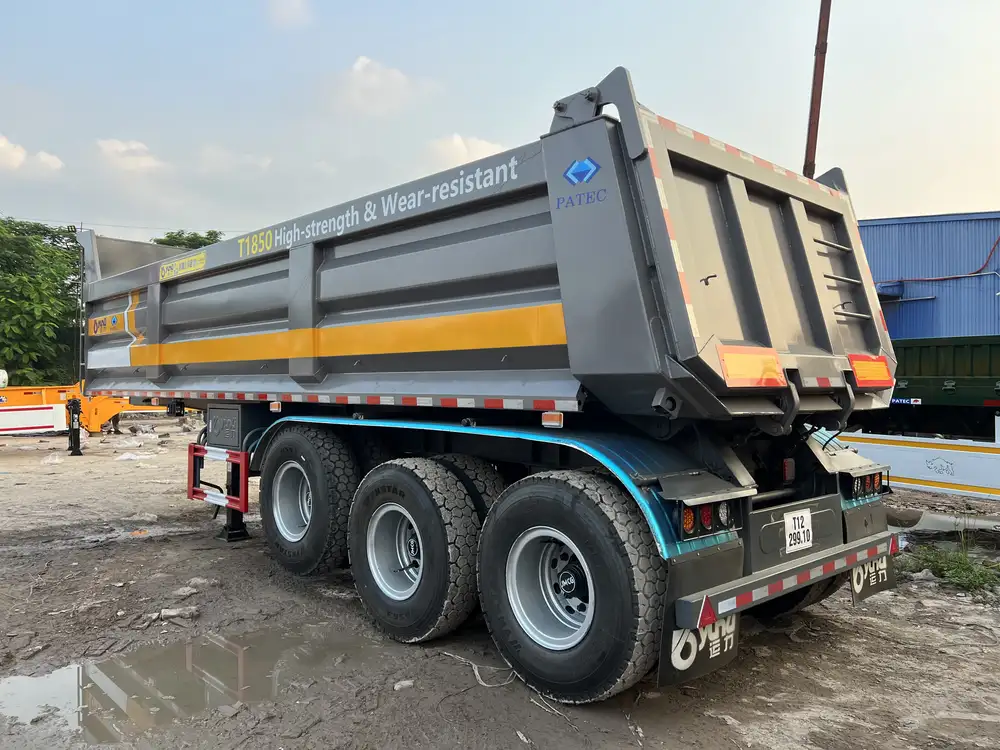
Customizing CarMax Trailers for Optimal Acid Transport
At CarMax Trailer, we understand that every transportation requirement is unique. Our semi-trailers are customizable to meet the specific needs of acid transportation, ensuring maximum safety and efficiency.
Modular Tank Designs
Our modular tank systems allow for easy customization and scalability. Whether you need single or multiple compartments, our designs accommodate various configurations to enhance operational flexibility.
Enhanced Safety Features
Safety is non-negotiable in acid transportation. Our trailers come equipped with:
- Secondary Containment Systems: Prevents spills and leaks from contaminating the environment.
- Ventilation Systems: Mitigates the buildup of hazardous fumes during transit.
- Automated Monitoring: Real-time tracking of tank integrity and cargo conditions.
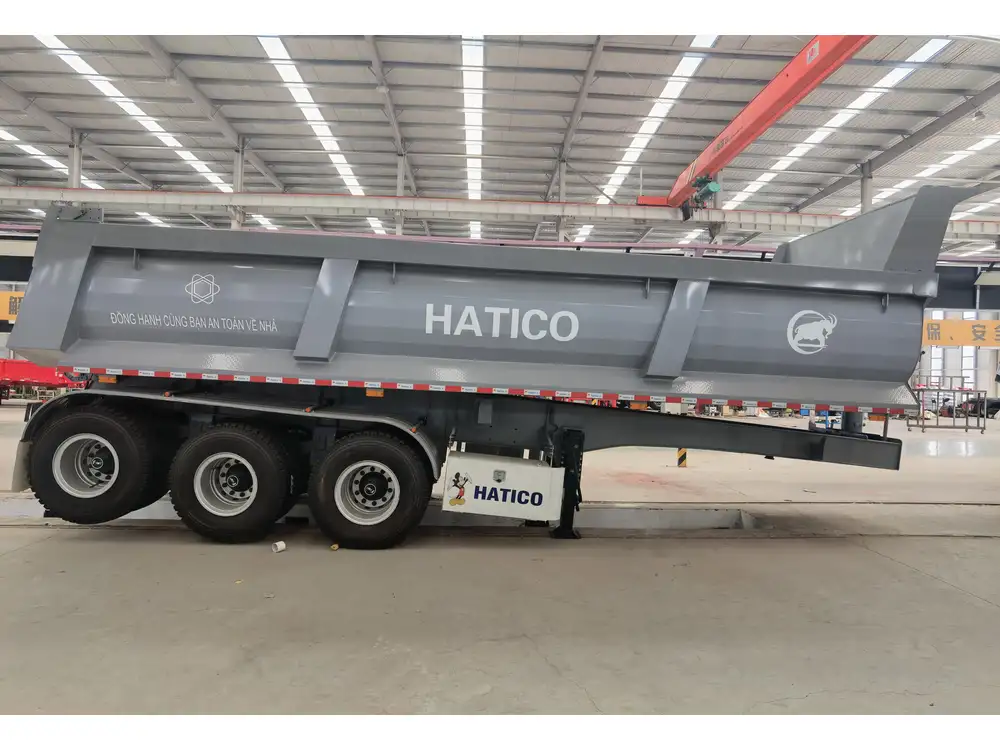
Ergonomic and Operational Efficiency
Designed with the operator in mind, our trailers feature user-friendly interfaces, easy access for maintenance, and optimal loading/unloading mechanisms to streamline operations and reduce downtime.
Maintenance and Longevity: Best Practices for Acid Tanks
Ensuring the longevity of acid tanks involves regular maintenance and adherence to best practices. Here’s how to keep your CarMax acid transport trailers in top condition:
Regular Inspections
Conduct routine inspections to identify signs of wear, corrosion, or damage. Focus on:
- Seams and Welds: Check for leaks or weaknesses.
- Coatings and Linings: Assess for cracks, peeling, or degradation.
- Structural Integrity: Ensure the tank maintains its shape and strength.

Cleaning Procedures
Proper cleaning is essential to prevent contamination and corrosion:
- Neutralization: Safely neutralize residual acids before cleaning.
- Non-Abrasive Cleaners: Use compatible cleaning agents that do not damage tank linings.
- Thorough Rinsing: Ensure all cleaning agents are completely removed to prevent chemical reactions.
Protective Measures
Implement protective measures to extend tank life:
- Regular Recoating: Reapply protective coatings as needed to maintain corrosion resistance.
- Temperature Control: Monitor and regulate temperature extremes that could compromise material integrity.
- Proper Loading Practices: Avoid overloading to reduce stress on the tank structure.
Innovations in Acid Tank Material Science
The field of material science is continually evolving, bringing forth innovations that enhance the performance and safety of acid transport tanks.

Nanotechnology-Enhanced Coatings
Nanotechnology is revolutionizing protective coatings, offering superior resistance to corrosion and abrasion at the molecular level.
Advantages:
- Increased Durability: Enhanced resistance to chemical attacks and mechanical wear.
- Self-Healing Properties: Minor damages can be automatically repaired, maintaining the coating’s integrity.
- Improved Surface Properties: Reduced friction and enhanced non-stick characteristics.
Smart Materials
Incorporating smart materials into tank designs allows for real-time monitoring and adaptive responses to environmental conditions.
Benefits:
- Embedded Sensors: Detect leaks, structural weaknesses, and environmental changes instantly.
- Adaptive Responses: Materials that adjust their properties based on temperature or chemical exposure.
- Predictive Maintenance: Data-driven insights enable proactive maintenance strategies.
Sustainability and Environmental Responsibility
At CarMax Vehicle, we prioritize sustainability in our manufacturing processes and product designs. Choosing the right acid tank materials not only ensures safety and efficiency but also aligns with environmental responsibility.
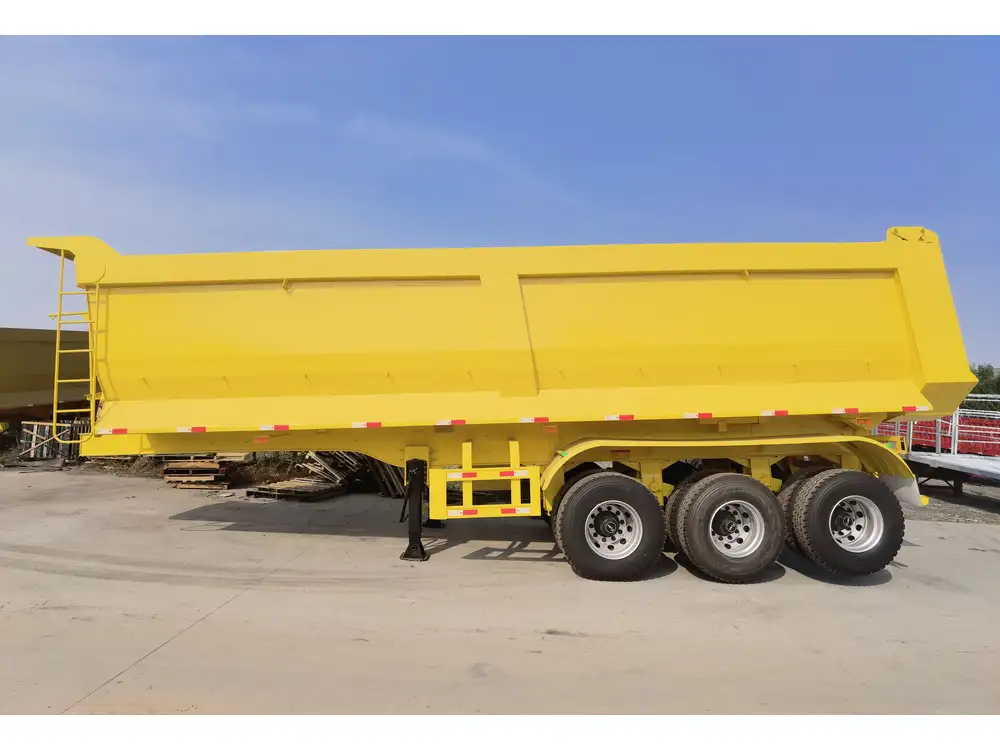
Recyclable Materials
Opting for recyclable materials like stainless steel and aluminum reduces the environmental impact by minimizing waste and promoting resource efficiency.
Low-Emission Manufacturing
Our production facilities employ low-emission technologies and practices, ensuring that the manufacturing of acid tanks adheres to stringent environmental standards.
Lifecycle Analysis
We conduct comprehensive lifecycle analyses to assess the environmental footprint of our products, enabling us to make informed decisions that balance performance with sustainability.
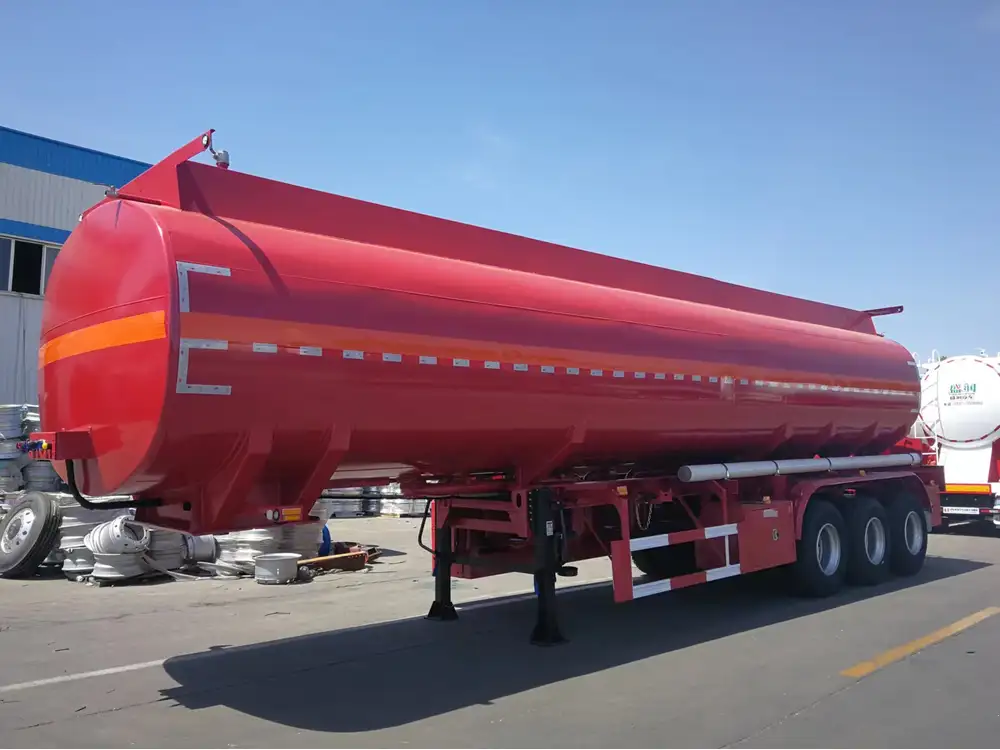
Cost-Benefit Analysis: Choosing the Right Acid Tank Material
Investing in the appropriate acid tank material involves evaluating both upfront costs and long-term benefits. Here’s a comparative analysis to aid in decision-making.
Initial Investment vs. Long-Term Savings
| Material | Initial Cost | Maintenance Cost | Longevity | Total Cost of Ownership |
|---|---|---|---|---|
| Stainless Steel | High | Low | Very High | Moderate-High |
| FRP | Moderate | Moderate | High | Moderate |
| Aluminum Alloy | Moderate-High | Low | Moderate | Moderate-High |
| Carbon Steel | Low | High | Moderate | Moderate |
Performance Metrics
| Metric | Stainless Steel | FRP | Aluminum Alloy | Carbon Steel |
|---|---|---|---|---|
| Corrosion Resistance | 10/10 | 9/10 | 7/10 | 5/10 |
| Weight Efficiency | 6/10 | 9/10 | 8/10 | 5/10 |
| Durability | 10/10 | 7/10 | 6/10 | 8/10 |
| Maintenance Needs | 9/10 | 7/10 | 8/10 | 4/10 |
| Cost Efficiency | 6/10 | 8/10 | 7/10 | 9/10 |
Note: Ratings out of 10, with 10 being the best performance.
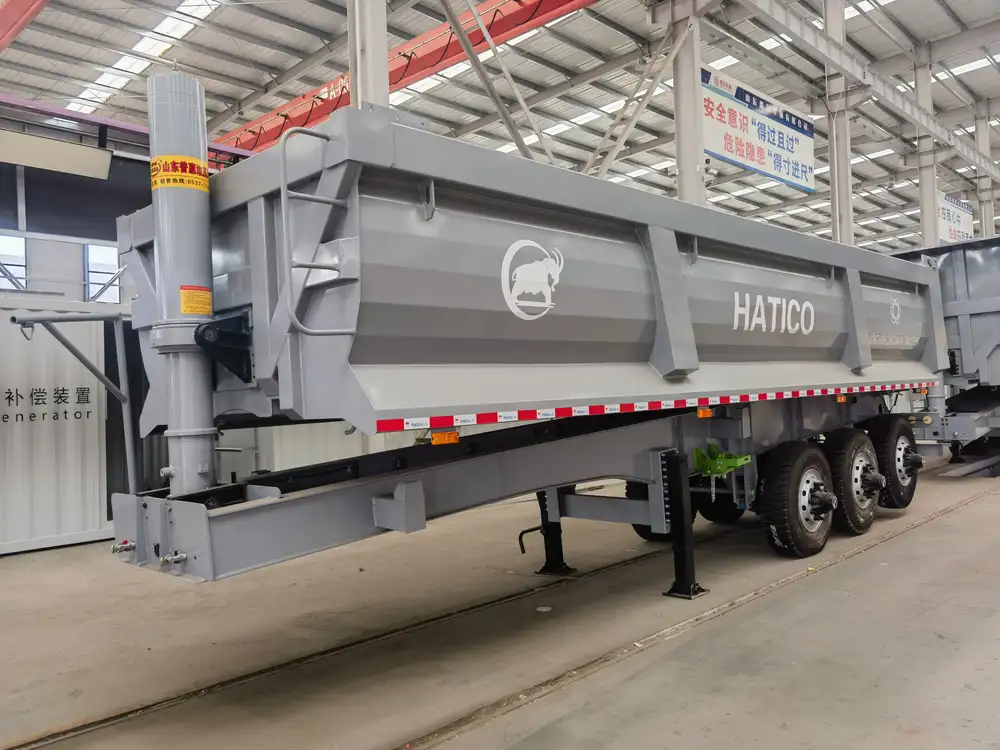
Enhancing User Experience with CarMax Acid Trailers
At CarMax Trailer, our commitment goes beyond manufacturing high-quality acid transport trailers. We strive to enhance the overall user experience through innovative design, exceptional customer support, and ongoing advancements in trailer technology.
User-Centric Design
Our trailers are designed with the end-user in mind, ensuring ease of operation, intuitive interfaces, and ergonomic features that reduce fatigue and increase productivity.
Comprehensive Support Services
We offer a range of support services, including:
- Technical Assistance: Expert guidance on selecting the right materials and configurations.
- Training Programs: Comprehensive training for operators on safe handling and maintenance procedures.
- After-Sales Support: Dedicated teams to address any issues and ensure continuous performance.
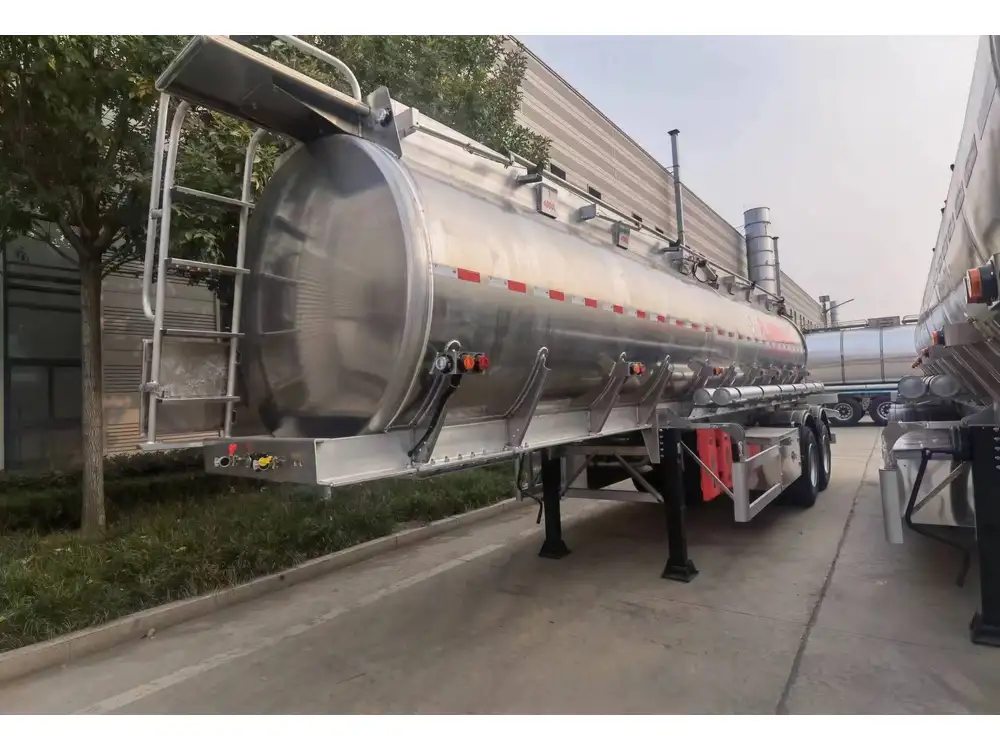
Continuous Innovation
Staying ahead in the industry requires relentless innovation. We continuously invest in research and development to incorporate the latest technologies and materials into our trailers, ensuring you receive the best possible products.
Future Trends in Acid Tank Materials
The landscape of acid tank materials is evolving, driven by advancements in technology and growing environmental concerns. Here are some trends to watch:
Bio-Based Composites
The development of bio-based composites offers a sustainable alternative to traditional materials, combining environmental friendliness with robust performance.

Enhanced Smart Integration
Future tanks will feature even more sophisticated smart integrations, including AI-driven diagnostics and automated safety systems that predict and mitigate risks in real-time.
Lightweight High-Strength Alloys
Research into new alloys aims to create materials that offer high strength-to-weight ratios, improving fuel efficiency without compromising durability or safety.
Conclusion
Selecting the optimal acid tank material is a multifaceted decision that impacts safety, efficiency, and cost-effectiveness in acid transportation. At CarMax Vehicle, we leverage our extensive expertise and commitment to quality to deliver semi-trailers that meet the highest standards of chemical compatibility, structural integrity, and regulatory compliance. By understanding the nuances of different materials and staying abreast of technological advancements, we ensure that our customers receive trailers that not only perform exceptionally but also contribute to sustainable and responsible transportation practices.

Frequently Asked Questions
1. What is the most corrosion-resistant material for acid tanks?
Stainless steel, particularly grades like 304 and 316, offers the highest corrosion resistance for acid tanks, making it ideal for transporting a wide range of acids.
2. How often should acid transport tanks be inspected?
Regular inspections are recommended at least weekly, with comprehensive checks conducted monthly. The frequency may increase based on usage intensity and the type of acids transported.

3. Can FRP tanks be repaired if damaged?
Yes, Fiberglass Reinforced Plastic (FRP) tanks can be repaired by professional technicians using specialized epoxy resins and patching techniques to restore integrity.
4. Are there eco-friendly options for acid tank materials?
Absolutely. Materials like stainless steel and aluminum are highly recyclable, and innovations in bio-based composites offer environmentally friendly alternatives without compromising performance.
5. How do smart materials enhance acid tank safety?
Smart materials integrate sensors and adaptive technologies that monitor tank conditions in real-time, providing alerts for leaks, temperature changes, and structural weaknesses, thereby enhancing overall safety.



